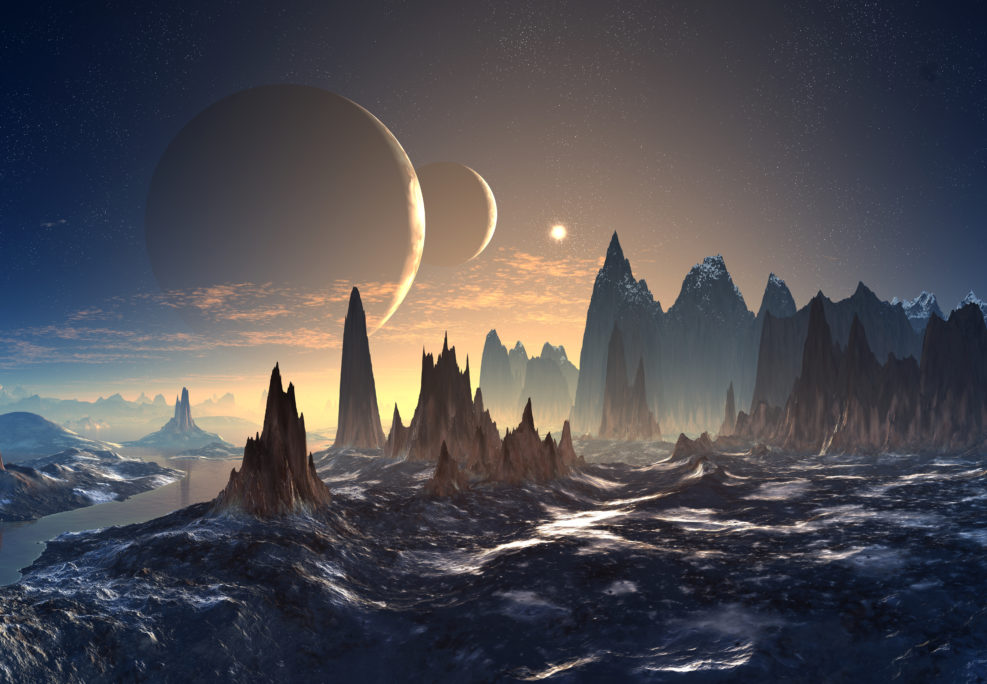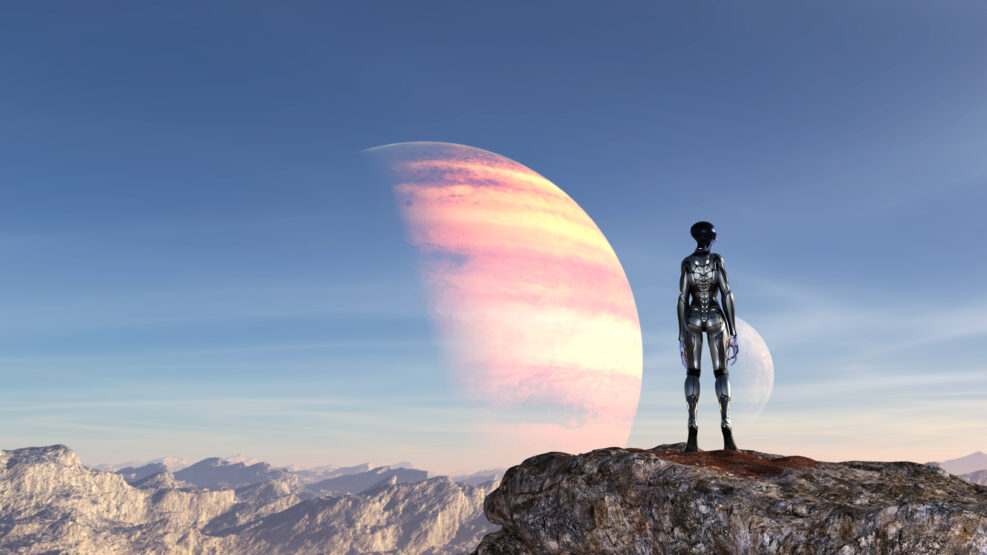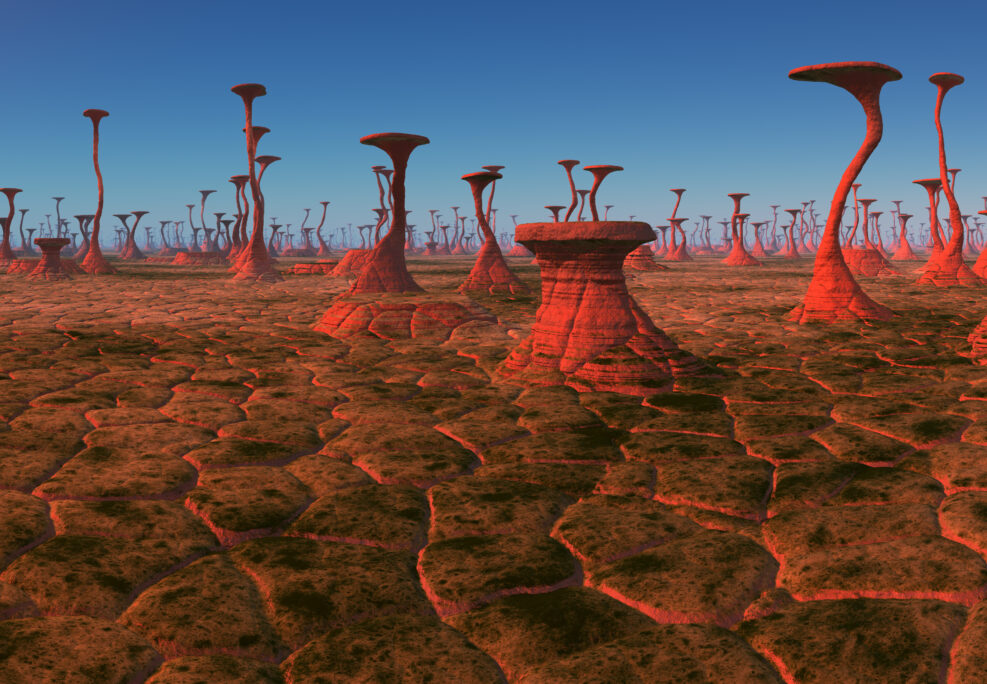
TagSeth Shostak


Could Real Planets Be Like the Sci-Fi Ones?
The hive mind works well on Earth. Could global consciousness work on Pandora in Avatar (2009)?Last month we looked at some really strange planets astronomers have discovered outside our solar system. Which prompts a question: Could some of the odd planets known to science fiction exist in the actual universe, given its laws? How about Tatooine from Star Wars which orbits “two scorching suns”? Part of a binary star system, the planet orbited two scorching suns, resulting in the world lacking the necessary surface water to sustain large populations. As a result, many residents of the planet instead drew water from the atmosphere via moisture farms. The planet also had little surface vegetation. It was the homeworld to the native Jawa and Tusken Raider species and of Anakin and Luke Skywalker, who would go on Read More ›

SETI’s Seth Shostak Explains the New Galileo Project To Find ET
Controversial Harvard astronomer Avi Loeb has put together a private funding package to search for alien lifeThe Galileo Project, formed in response to the recent release report on Unidentified Aerial Phenomena (UAP), proposes to look “systematically, scientifically and transparently” for evidence of ET. The report noted that a number of observed phenomena remain unexplained. SETI’s Seth Shostak explains: Avi Loeb, a Harvard astrophysicist who doesn’t hesitate to swim in the shark-infested waters of controversy, is proposing a major effort to find aliens in our solar system, perhaps even in our airspace. He has raised $1.7 million in private funding to launch something he calls the Galileo Project, an initiative to bring the rigor of experimental science to ufology. Loeb’s plan is to use a telescope now under construction, the Vera C. Rubin Observatory, to study interstellar Read More ›

ET Expert Thinks That ET Is Probably AI (Artificial Intelligence)
Given the immense interstellar distances, not being alive might be the only way ET could get here.Search for Extraterrestrial Intelligence (SETI) astronomer Seth Shostak (pictured) confesses that these are exciting times for alien hunters like himself, what with the Pentagon’s anticipated July 25 report on unidentified aerial phenomena. Still, he doesn’t expect any big revelations: “I think it’s overwhelmingly likely that aliens are present in our galaxy. But I don’t believe they’re hanging out in our airspace. Not now, and not in historic times.” On the other hand, he goes on to say, every third star in our galaxy could host an Earth-like planet so the odds are we are not alone. Few life forms on Earth resemble humans, so why should extraterrestrials? But if we are not alone, what would ET be like? A gaseous Read More ›

Astronomer Bets a Cup of Coffee That We’ll Encounter ET by 2036
Seth Shostak points to the increase in the number of exoplanets identified and the increase in computing powerSeth Shostak, iconic astronomer who directs the Search for Extraterrestrial Intelligence (SETI), is so confident that the vast increase in computing power, based on Moore’s Law, will make the difference in detecting signals from alien civilizations that he will bet you a cup of Starbucks coffee that we make contact by 2036. Moore’s Law (1965) originally held that computers would double in power every two years. But today’s pace is actually faster than that. And on the horizon is quantum computing and carbon computing, which would speed things up while reducing energy consumption. So Shostak (pictured) is looking at considerable reinforcements for a systematic search. He stresses that the search for ET is now largely computerized: “We don’t sit in Read More ›

Seven Reasons (So Far) Why the Aliens Never Show Up
Some experts think they became AI and some that they were killed by their AI but others say they never existed. Who's most likely right?Science fiction author Matt Williams is writing a series at Universe Today that offers the leading explanations for why They never write, They never phone… It’s based on an incident in 1950 when Italian physicist Enrico Fermi (1901–1954) asked colleagues at the Los Alamos National Laboratory a question: If space aliens are a sure thing, “Where is everybody?” As Seth Shostak puts it at Search for Extraterrestrial Intelligence (SETI), The remark came while Fermi was discussing with his mealtime mates the possibility that many sophisticated societies populate the Galaxy. They thought it reasonable to assume that we have a lot of cosmic company. But somewhere between one sentence and the next, Fermi’s supple brain realized that if this was true, Read More ›